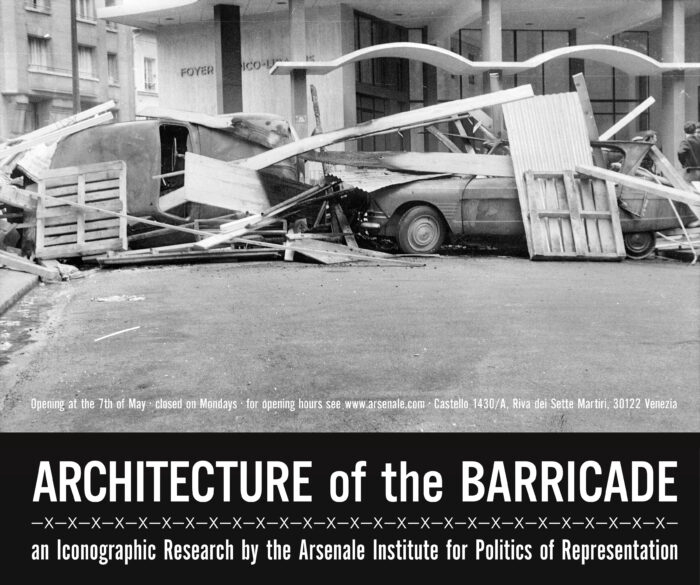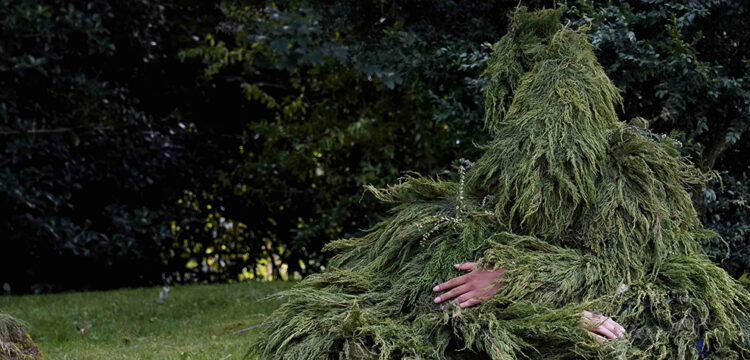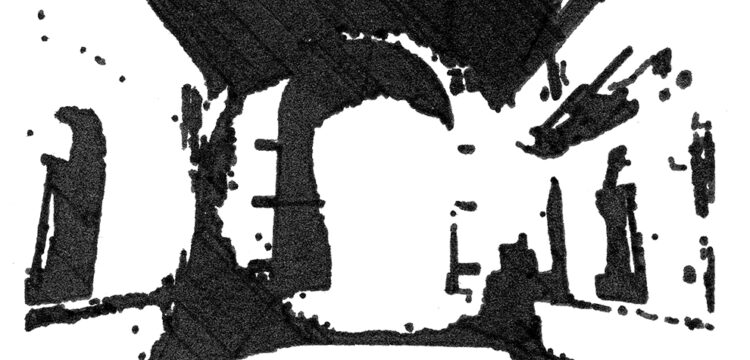Diorama Fies
Assembling a performative and territorial panorama
Centrale Fies is a center dedicated to the performing arts that operates in an early twentieth-century hydroelectric plant—owned by Hydro Dolomiti Energia—partially abandoned and recovered for cultural activities. Started in 1999 by Barbara Boninsegna and Dino Sommadossi, the project continues the experience of the Drodesera festival and generates an annual continuity of artistic productions and residencies.
The 2024 public program was divided into three episodes: Live Works, from July 19 to 21; Feminist Futures, July 26 and 27; Evolving love, from September 19 to 21. A sequence that here introduces the Centrale’s aptitude to alter and redefine its own narrative structures through the creative direction of Virginia Sommadossi, supported by Elisa Di Liberato (Mali Weil), in a work that generates complex seasonal identities—for the Centrale’s programming—parallel to the curatorial choices.
The tension towards the complexity of the contents and formats of communication is enhanced by the character of a space that has been abandoned and by its position on the edge of a wild territory; [1] a position from which the Centrale expresses practices of narrative reappropriation towards its complex of buildings and the surrounding territory. It seems natural then that the 2024 summer program has been presented as an expression of a cultural outpost [2] and that the critical practice of the Centrale towards stereotypical narratives also has territorial imaginaries as its object. [3]
The lens of this text comes from the relationship between artistic and territorial feelings, questioning the action of the Centrale in assembling performative and territorial panoramas, according to mutual inspirations between these fields. This text offers a review of the performances and critical themes that appeared in the summer program. A panorama that often interprets conflictual interactions between radical and standardized conditions. A performative panorama and conditions that express a desire for narrative and social complexity, welcomed by the Centrale and specified in a direction that forces the conventions of language and actions.
Other forms of territorial experience also operate during the programming days. The summer program did not end with the sequence of performances. Other temporal and emotional lines overlapped, increasing its complexity: the sensations that come from the edges of a wild territory, the times of the meetings in the park and of the nocturnal audio sets, coded or not, reveal the power of the building and the natural spaces around it to confuse the intimate and territorial level in a scenario that expresses an autonomous narrative action.
The processional routes of the public recover the dynamics of cruising [4] and confirm the ability of the building and the spaces around it to act as an authorial landscape on the feelings and experiences of people. The actions of the preview of the Live Works Summit, [5] those that remained accessible in the exhibition space, [6] the program of afternoon lectures, [7] the live sets, [8] allude to a cultural complexity as well as a complexity of relationship with the space of the building and the territory.
Other actions have established different relationships with the time and place of their appearance. During the days of Evolving Love, Nuvolario, the installation designed by OHT (Office for a Human Theatre), remained accessible but elusive in a space closed by the stage curtains of Sala Turbine 1. Non, a performance by Davide Savorani, was instead staged every day at the same time in Sala Forgia, associating that space of the building with the recording and reproduction capacity of La invención de Morel, the celibate machine that in Bioy Casares’s novel (1940) offers the castaway protagonist the daily and punctual appearance of some figures, including the ambiguous Faustine. In the novel, the protagonist accepts the existence of “new types of photography” and learns how to insert himself into the record so that it appears that he and Faustine are in love. A similar attraction brought the audience back to that encounter every day, to define their own position in that love relationship.
A loving dialogue that was re-established in a workshop that Chiara Bersani held on the same stage as her performance in Sala Forgia, exalting the condition of disability as a natural partner of a critical action towards stereotyped feelings and actions; a seminar opened by the discovery of an ancient declaration of love, a trace of weakness and affection linked to the excavation of the adult bodies of disabled people who lived in prehistory, also revealing the presence of those who took care of them.
Spaces and encounters whose dimensions vary from that of the intimate experience to the territorial one and endure other variations, when the real dimensions of the spaces are altered by the memory of the presences and actions of the previous seasons. Even the dimension of curatorial responsibility pulsates between the different actors who, in addition to Barbara Boninsegna, contribute to it: Simone Frangi, Filippo Andreatta, Elisa Di Liberato, Mackda Ghebremariam Tesfaù, Denis Isaia and Maria Chemello regarding the executive responsibilities. It is difficult then to establish the dimensions of a cultural center, apparently circumscribed and isolated and which instead has seasonal, thematic and format pulsations of its expression. Different dimensions that may seem possible to measure—at the extremes—between subordinate artistic and territorial interpretations, compared to hegemonic and consolidated positions.
Questioning its variable dimension, the scale of Centrale Fies is that of a diorama of a territorial system that includes the themes of abandonment and recovery; of the role of a system of spaces and structures scattered across the territory; of the presence of nature. A diorama that reacts to the quality of hegemonic territorial interpretations, whose sadness corresponds to another abandonment, in fact, of cultural spaces and territories.
A diorama that assembles the actions staged—models of private and social feelings and behaviors—in the form of a continuous artistic panorama. The possibility of projecting this diorama towards the social and territorial planning is linked to the choice of the appropriate pantograph—the tool that allows the leap in scale from images and gestures towards the territory—and the natural pantograph for the action of the Centrale is that of the affective connection. [9] A theme that will always be detected in the panorama of themes and actions that follows and that projects the sequence towards larger dimensions, also encountering institutional strategies in this projection:
For the first time in an administrative setting, art history has been consulted as a competent discipline in the field of landscape planning. Custodian and at the same time interlocutor of the centuries-old stratification of performative visions on the regional territory that can be reconstructed through the heritage of images dedicated to it. [10]
This is how the possibility of using an iconography of the landscape is described, as an artistic verification of the drafting of the Landscape and Territorial Plan [11] of the Tuscany Region (2016). An iconography, a journey through images similar to the sequence of artistic actions questioned here, which relaunches the possibility of assuming a role in the processes of cultural and territorial transformation and relaunches the cultural and social responsibility of the Centrale and of the enormous network—its real dimension—of artists, researchers, and lovers around it.
Themes
This appendix defines the themes that recur in the panorama [12] of the 23 performances presented in the summer of 2024 and then offers a numbered review. At the end of the synopsis of each theme, the actions that incorporate it are indicated.
Dramaturgy as an assembly of biographical, formative elements. The performances are organized around traces—photographical, video, sonic—sampled from intimate archives. The dramaturgy is directly derived from personal experiences and builds emotional landscapes on stage that are able to establish an affective connection with the audience. (1, 2, 3, 4, 5, 7, 8, 9, 13, 18, 20, 21, 23)
The expression of love. In a sentimental field that Centrale Fies keeps structurally active around itself in terms of welcome and support, declarations of love appear in a frequent number of actions, detected by the titles of the sections of the last two years: (Enduring love, 2023; Evolving love, 2024). (2, 7, 10, 11, 15, 20).
Lo-fi dramaturgy and staging. Some actions remain incomplete, offering an apparent making-of. The Centrale program dedicates space to works in a still incoherent and seductive phase, suited to an ephemeral and partial tone. (2, 3, 9, 14, 17, 20).
The lecture format. The frequency of lecture performances increases, the informative development of anthropological, scientific or pseudoscientific themes. One of the tactics of these ex-cathedra actions is that the performers—to gain credibility in the lecture format—take on the role of academic figures, exponents of surreal institutions or devices at the service of the materials presented. (4, 8, 10, 14, 15, 17, 22).
Audio devices as parallel protagonists. A theme that does not necessarily identify forms of live music, but rather the role in the dramaturgy of real-time audio listening and editing. (2, 3, 5, 11, 12, 13, 17, 20, 21).
The description of transformation processes—magical or scientific—is rendered through synesthesia and variations of state in which objects and bodies become symbols of change and continuous forcing of norms and customs. Actions that invite us to perceive the scene in new and interconnected ways, highlighting the processes of metamorphosis. (7, 9, 12, 13, 14, 16, 17, 19, 22).
Performative panorama
Live Works Summit
Curated by Barbara Boninsegna and Simone Frangi and with Mackda Ghebremariam Tesfau’, Justin Randolph Thompson for the Agitu Ideo Gudeta Fellowship, executive curatorship by Maria Chemello.
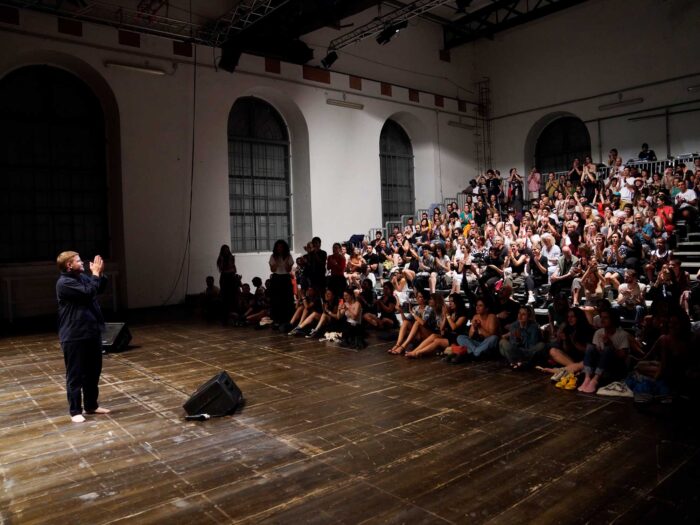
Live Works is a project that includes periods of residency in Italy and abroad offered to projects selected through an annual call. The curatorial action of the Centrale intervenes indirectly in the process of defining the projects by developing their cultural ground. Live Works Summit is the period of public restitution of this process, according to a program completed by an exceptional but mimetic schedule of guests—Kae Tempest, Sama’ Abdulhadi, Sammy Baloji—that is here inserted into the flow of performances.
1.
Time and Again. Valerie Tameu.
Friday 19th July, Sala Turbine 2, 7.30pm, duration 40′
The action of a dancer in a scenic dialogue with images from her family photographic archive, a documentation that overlaps personal memories and social tensions, an expression of the first theme identified by this text.
2.
Acapella performance, Kae Tempest.
Friday 19th July, Sala Turbine 19.00pm, duration 40′
A semi-intimate dialogue between Kae Tempest and her partner, seated in the front row to follow her recital. A declaration of love, the second of the themes identified, that the action of Centrale Fies provokes and receives.
3.
8938th song: with Nil Yalter, Melis Tezkan.
Friday 19th July, Sala Comando, 10.30pm, duration 45′
8938th song returns an archive of conversations between Melis Tezkan and Nil Yalter, the Turkish artist naturalized French whose research developed in the context of the French counterculture in the 60s. Artistic positions, feelings of solidarity expressed through feminist practices, intimate considerations on living and friendship, declined in a perspective of dialogue between generations.
A work that breaks the standard formats of the restitution of similar experiences: conversations, musical memories, are broken down between the first impressions they arouse and their subsequent analysis. A restitution in fragments, which expresses the third of the themes identified and gains from another occasional break: an unexpected reduction of the line up—which also included Okan Urun—that enhances the character of the action even in the consequent incoherence of some sequences.
4.
Unsettling genealogies, Alessandra Ferrini.
Saturday 20th July, Sala Mezzelune, 7.30pm, duration 40′
Unsettling genealogies still maintains parallel a reconstruction of the institution of the Venice International Film Festival, founded in 1932 by Giuseppe Volpi Conte di Misurata, Antonio Maraini and Luciano de Feo in the context of fascist political and cultural action and the story of three members of the Ferrini family, employed at Villa Maraini in Florence in the 1930s and 1940s.
Alessandra Ferrini makes herself available to public and intimate materials that describe the two events, activated in real time by the performer/device; mechanical presence—and expression of the fourth theme identified by this text—that deals with the ordering and display of the materials progressively revealed on the scene.
5.
The concretely WE: voices from within the camp, Mohamed-Ali Ltaief.
Saturday 20th July, Sala Comando, 9.30pm, duration 50′
The concretely WE: voices from within the camp reworks ethnographic recordings made by the Royal Prussian Phonographic Commission with World War I prisoners in the Wünsdorf camp in Germany between 1915 and 1918.
The action offers the hypertrophic sonic structure of the work of Lamin Fofana and Tarxun and seems modeled in the form between documentation and fiction, on the theatrical writings of Frantz Fanon [14] experimental dramatic forms that problematize questions of language, recognition and identity, declined in the surreal and abstract tone that prefigures his later essays.
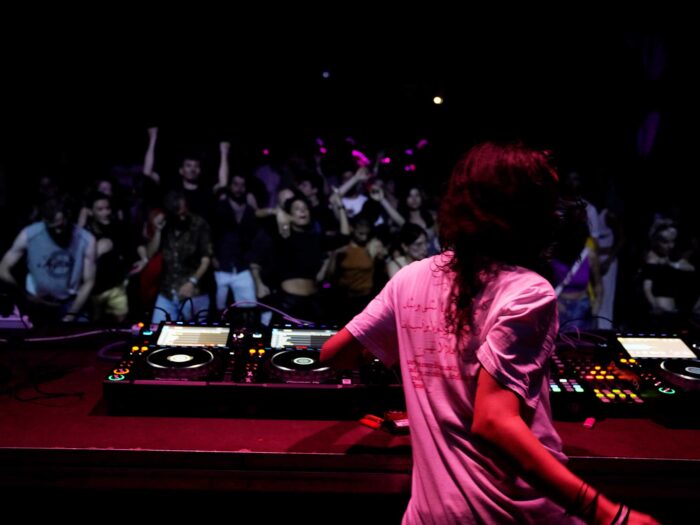
6.
Dj set, Sama’ Abdulhadi.
Saturday 20th July, Sala Turbine, 22.30pm, duration 120′
The Palestinian DJ offers the least mimetic presence among the guests; a necessary presence, which in this text serves to define another of the characteristics of the Centrale experience: tones and atmospheres of clubbing with the connected dynamics of cruising and abandonment, which return in the timing and in the desires of the public.
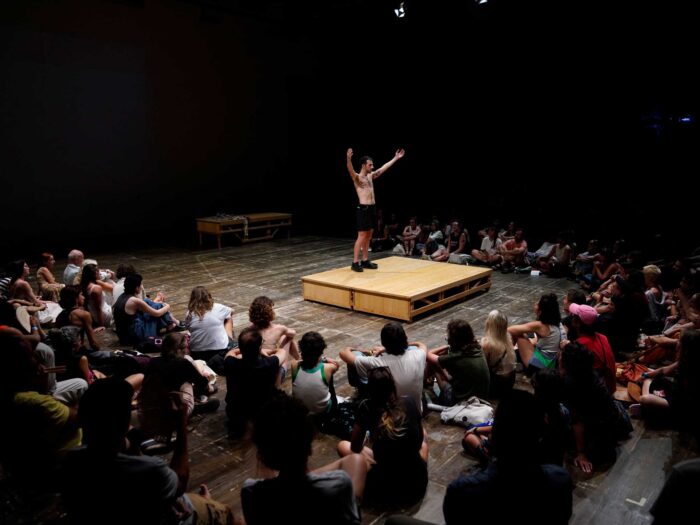
7.
Good job, Good boy II (sketch I), Eloy Cruz Del Prado.
Sunday 21 July, Sala Turbina 2, 7.30pm, duration 40′
Good job, Good boy II (sketch I): another solo performance and a confrontation with a family condition. The scenario changes—this time rural—of a queer desire to validate one’s aspirations in continuity with family and local traditions, with gestures and movements connected to childhood memories, with folkloristic presences and rites, through a critique of the dynamics that form our sense of self-esteem and belonging.
8.
Missa Utica, Sammy Baloji.
Sunday 21 July, Sala Comando, 21.00pm, duration 50′
Missa Utica is an episode of Fragments of Interlaced Dialogues, a corpus of artistic and live actions inspired by objects from the Congo, preserved in various European museums, interlocutors of this research. In the 16th century, the first African bishop was supposed to settle in Utica, Tunisia; an episode documented by apparently naive exchanges of letters and diplomatic interactions that however look at the connections between slavery and evangelization, while hinting at the subversion of an only exotic validation of objects and behaviors, connecting in this process, up to the staging, pre- and post-colonial eras. The action in fact reinterprets the Missa Luba, a Latin mass with traditional Congolese songs, through a musical dialogue between European classical music and Congolese rumba.
9.
‘ssassin’s Creed (Lady says Stop), Liina Magnea.
Sunday 21 July, Sala Turbine, 22.30pm, duration 30′
One of the lenses of this text observes the different spatial conditions offered by the Centrale during the summer program. The progressive discovery and use of the spaces by the public are an experience parallel to those of the performances. Liina Magnea opens the backdrops between the Turbine 1 and Turbine 2 rooms, establishing a relationship between what until now had been separate spaces, with shuttle runs from one back wall to the other, similar to the suicides with which one trains on the basketball court. The public does not watch from the stands—used by the performer as an elevated set—but from a central band.
Another work on an archive of emotional dynamics, ephemeral but profound provocations, reels through which the algorithm of a personal disease searches for figures who act in a distorted way trying to re-establish control over the surrounding reality. “’ssassin’s Creed (Lady says Stop)” exposes the madness of people who do not feel their presumed status is recognized: people who declare themselves victims and fall prey to a self-referential madness or who proclaim themselves prophetic and chosen figures, just losing control or founding sects.
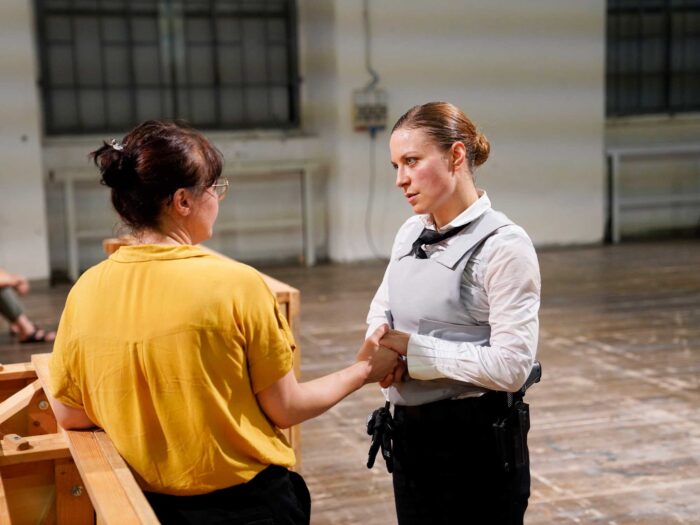
Feminist futures
Curated by Barbara Boninsegna and Filippo Andreatta. The program questions inequalities in contemporary performing arts, using the body of thought consolidated by the term intersectional feminism, which looks at the interconnections between the different oppressions that act on marginalized conditions or groups, such as those of gender, race, class, sexual orientation, disabilities.
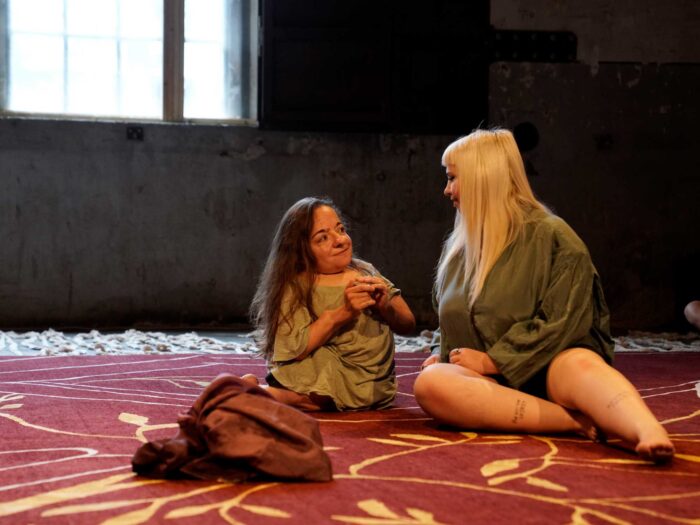
10.
Deserters, Chiara Bersani.
Friday 26th July, Sala Forgia, 7pm, duration 60′
“In illness […] we cease to be soldiers in the army of the upright; we become deserters. They march to battle. We float with the sticks on the streams”. [15] Deserters is a panorama of disabled bodies that cross the space of a carpet made by the artist, that includes them and figuratively represents them. The gestures and sounds generated by this procession of non-conforming presences undermine the conventions related to the identity and sexual sphere that affect people with disabilities, attributing a political value to the presence of the body on the scene.
11.
IBM 1401—A User’s Manual (in memoriam), Erna Ómarsdóttir.
Venerdì 26 luglio, Sala Turbina 2, ore 21.00, durata 50′
IBM 1401—A User´s Manual (in memoriam) is dedicated to the first IBM 1401 that arrived in Iceland in 1964. The IBM 1401 was not designed to play music, but by reprogramming it and placing a radio receiver next to it, simple melodies could be obtained. The IBM 1401 was also taught to sing.
When new models made it obsolete, the IBM 1401 [16] was given a funeral, during which those who had worked with it expressed gratitude and grief. The ceremony was documented on tape with recordings of the machine in operation and also of its music. The music for the action is based on those recordings and mixes dance movements with a reflection on nostalgia for abandoned technology and the body/machine theme.
12.
De sospiri, Sofia Jernberg.
Friday 26th July, Sala Mezzelune, 10.30pm, duration 60′
Sofia Jernberg literally translates the prelude of the third act of Tosca on stage: Io de sospiri, te ne rimanno tanti, pè quanto foje ne smoveno li venti. An action of vocal mastery that follows the jazz custom of presenting the theme of ‘standards’ such as, O leggiadri occhi belli (Anonymous), Che si puo fare (Barbara Strozzi).
Some passages of the arias are repeated until they produce a sort of resonance with the performer and progressive vocal distortions. The piece can resume its course, maintain the distortion, or transform into other subsequent ones from Jernberg’s experimental repertoire, [17] or recall counterstructuralist references such as Lohengrin 2. Disegno per un giardino sonoro (2004) by Salvatore Sciarrino, Three voices by Morton Feldmann (1982)
The technique enhances the latent resonances in the starting sounds, taken from an apparently comforting and melodic repertoire. As if the song chose to follow environmental vibrations, amplification noises, abandoning the main body of the pieces.
If the practice of action on archives is one of the themes of this text, De sospiri offers a wide range of the use of the elements of an archive in audio analogy. Sampling, editing, overlapping of tracks, together with the other nomenclature of distortions on sound, of the minimalism of repetitions.
13.
Cruna, Muna Mussie e Massimo Carozzi.
Saturday 27th July, Sala Mezzelune, 6.00 pm, duration 40′
Cruna is a transformation action of Curva, Cieca, Oblio, three different performances that Muna Mussie produced between 2019 and 2023. In Cruna, the audio recordings of those actions are processed live again by Massimo Carozzi and the performer through the repetition of sonic samplings, according to iterations that lead to new spatial meanings for the materials worked.
Through slight successive variations Cruna reaches the environmental and scenic outcome of a performative material, which had already been translated into a record, according to a procedure that has the terms of audio production processes and superimposed the characteristics of textile art: this is the metaphor used both to describe the repetitive activity and which proceeds by minimal alterations, and to fix its spatial outcomes in a display already traced by cables stretched around the artists.
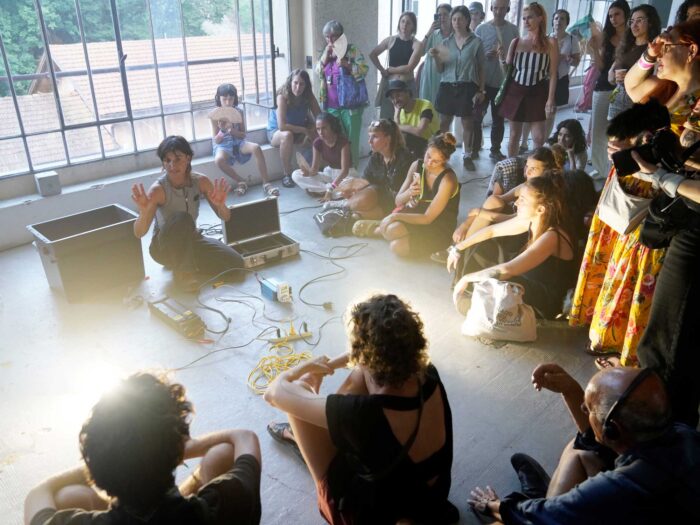
14.
DOPA, Anne Lise Le Gac (OKAY CONFIANCE) & Anat Bosak.
Saturday 27th July, Sala Comando, 6.00 pm, duration 60′
In DOPA (for “dopamine,” a neurotransmitter conveyed by frequent YouTube reels as a driver of pleasure and well-being), hackers repair and modify small (eco)systems. The performance builds minimal operating environments in real time, drawing on unique situations and contexts.
In each case study, according to a corporate humour reminiscent of the work of Sigbjørn Bratlie, or the ridiculous rituality of Rube Goldberg machines, overengineered solutions that drive useless transformation processes, a subgenre on YouTube, the energy sources and structural constraints are mapped, the watts consumed are calculated and Easter eggs are tracked. DOPA re-establishes a parallel between the transformations operated by a high level of engineering capacity and magical transformations, transformations whose procedure is similarly incomprehensible or invisible.
Evolving Love
15.
Asteroide, Marco D’Agostin.
Thursday 19th September, Sala Turbina 2, 8.00pm, duration 40′
In Asteroide Marco D’Agostin, playing a paleontologist, recovers the hypothesis of the asteroid—whose impact would have led to the extinction of the dinosaurs—that disturbed the scientific community in the 80s, according to a feeling similar to that of someone who suddenly finds himself without somebody to love.
A sentimental inclination that seeks space on stage: the scientist’s sentences open up to sentimental details, the posture of a limb takes on a bizarre choreographic pose, the pronunciation increasingly resembles singing. The format of the conference seems possessed by the format of the musical, the form of entertainment that is least possible to consider seriously, which attempts to manifest itself and impose other rhythms and codes on the dialogue. Thus a double lens is activated between dissemination and entertainment, of an analysis of reaction tactics to environmental and sentimental catastrophes.
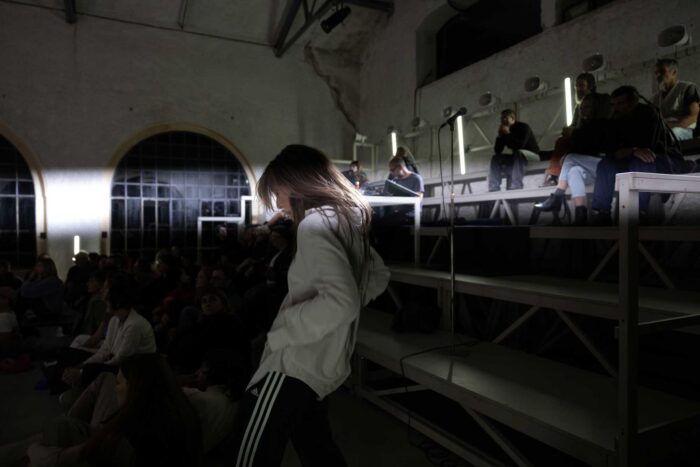
16.
Bromio. La vita indistruttibile, Anagoor.
Thursday 19th September, Sala Comando, 9.30pm, duration 40′
Marta Ciappina indicates gestures and behaviors of this collective action to the other performers who assume and interpret them in succession, alternating them with ritual moments of encounter and seduction. The ways of trance (the sound design is by Mauro Martinuz) see the movements alter, translated from person to person, according to a slight slippage between personal and collective positions; behaviors and bodies conforming and anomalies.
17.
Nothing deeper, Elena Rivoltini.
Friday 20th September, Sala Comando, 6.30pm, duration 40′
A double lecture performance on the possibilities of generating new bodily imaginaries through a practice of field recording of the body and its internal anatomical landscape and on anatomical theatres and other display structures of the body, against the backdrop of the practices of medicalization of marginalized and female bodies.
18.
No pares (sigue, sigue). Sergi Casero Nieto.
Friday 20th September, Sala Mezzelune, 20.30pm, duration 60′
No pares (sigue, sigue) motivational and energetic anthem, in the merengue hip hop-style of Proyecto Uno, explores the personal condition of resistance to overload with a post-modern approach in the hyperreality of a spinning class set. The action plays on elements of repetition and resilience, involving the audience in a hypnotic and enthusiastic cycle of action and response.
If it evokes the theme of recent forms of cultural resistance and the collective strength that would emerge from shared rhythm and movement, the work instead highlights the sadness of some new feelings as a sort of FOMO of the self, a sort of tension towards continuous and accelerated self-realization. Of this hyper-self-entertainment No pares expresses a collective and ritualistic version.
19.
Heart Brake, Giulia Damiani.
Friday 20th September, Sala Turbina 2, 10.00pm, duration 45′
Heart Brake explores the suffering caused by systemic oppression, giving the broken heart a physical and sonic identity. The performance is a dialogue between Giulia Damiani and Luísa Saraiva—the voice of a historically marginalized and silenced figure—and creates a synergy between breath, voice and song around the imagery of the manual splitting of the rock as a metaphor for a disruptive and liberating action. The work exalts objects, clothes and accessories that build a space in which body and symbols coexist and give visual and sonic form to the struggle for self-affirmation.
20.
Per ricantare amore, Giulia Crispiani.
Friday 20th September, Sala Comaando, 23.00pm, duration 40′
Per ricantare amore, title of a lyric by Virginia D’Andrea, [18] is an action based on a text in which the deposits of other previous actions and the fragments of the intimate discourse and action of subversive women remain legible, together with the glances of Giulia Crispiani—still filtered by a loving lens—on different panoramas: intimate and generated by feelings of affection, social and established by oppressive policies, subaltern and hegemonic panoramas. The reading is parallel to the live construction of the sonic part of the action.
21.
Perle Sparse / Perles fanné par tous, Vashish Soobah.
Saturday 21st September, Sala Mezzelune, 7.30pm, duration 30′
Perle Sparse / Perles fanné par tous works on the theme of travel and reconnection with the artist’s Mauritian roots. The performance-installation uses an imaginary map and video projections that reflect on personal memories and migration experiences.
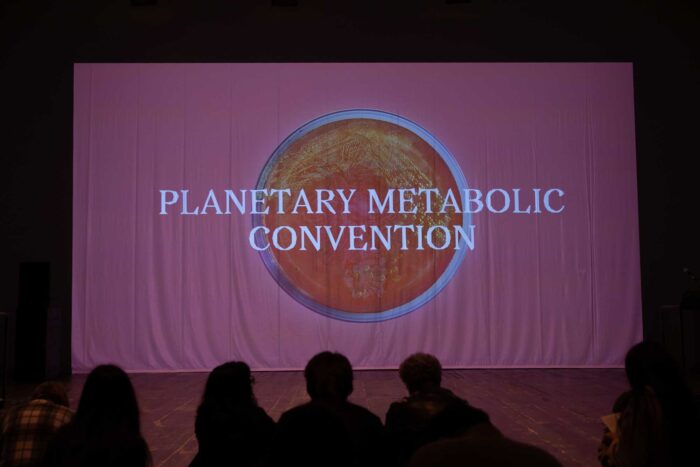
22.
Sun Eaters—a juridical prototyping, Mali Weil.
Saturday 21st September, Sala Turbina 2, 9.00 pm, duration 30′
Mali Weil has been nurturing a research process on the concept of interspecies diplomacy for years, now a landscape on the threshold of world-building and not only artistic recognition. The recent reform of articles 9 and 41 of the Constitution has established that the Republic recognizes the protection of biodiversity and ecosystems. In this context, Mali Weil goes beyond the construction of a space where artists and activists can simulate governments and institutions to discuss and implement rights for non-human entities, expanding the discussion on interspecies difference and coexistence, suggesting—one of the reasons for this text—that artistic actions can influence environmental legislation and policies.
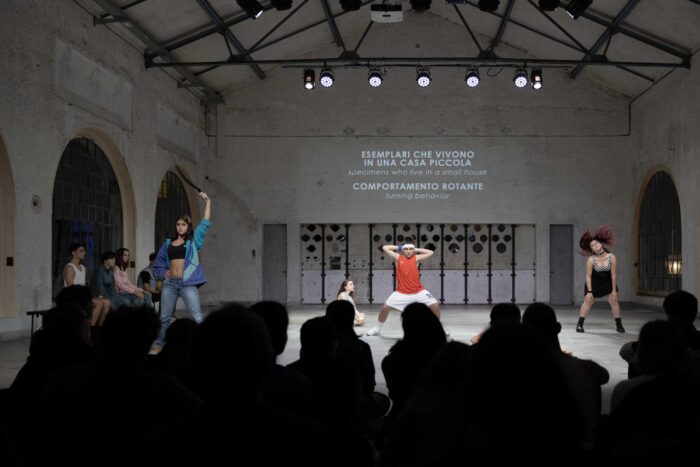
23.
<age>, Collettivo Cinetico
Saturday 21st September, Sala Comando, 10.00 pm, duration 75′
In <age> nine adolescents sitting along answer a series of definitions that appear in sequence on the backdrop, rising and occupying the stage when they feel described by one of the categories. <age> is an interview through collective questions; a documentary format that adopts dramaturgical and editing practices in the restitution of its results. An investigation procedure similar to the method of this appendix that has defined themes, then associated with the 23 live actions.
<age> closed the Centrale summer program and this text, associating the investigation of a group of people—and therefore of a territory—with the artistic restitution of a study practice that fits into a tradition of research as action. [19] A curatorial and productive practice, the construction of a performative panorama as a tool of knowledge brings us back to the nexus between knowledge and action in the construction of urban and territorial policies. [20]
A practice that questions two possibilities: how can the investigation of the sampling of an archive—or of a population—become meaningful on a larger scale? How can an artistic panorama—such as that of the summer program represented in this appendix—interact with processes in different fields?
The panorama of live actions has declined a social and territorial research through gestures—interviewing people, studying archives, frequenting and representing houses and spaces—which are social acts. A frequency of places that requires an idea of reciprocity that must be built over long periods. It is a matter—for the artists and for the Centrale—of doing research by inhabiting a building whose capacity for projection towards the territory is explored in this text, starting the complex of social practices that are a means and an opportunity for learning. [21] Practices that define the idea of love that runs through this text in an idea of research as a relationship.
[1] Cf. Ruali Luca, 2019, Il paese nero. Black Italy, bruno, Venice. First publication of the Loc. Fies 1 series, curated by Filippo Andreatta and Virginia Sommadossi. The text introduces the hypothesis of a relationship between the structure of the territory; the nature of the recordings—literary, sonic, visual—that describe territorial experiences; the montages and communication formats of these recordings capable of maintaining and increasing their complexity.
[2] Santoni Stefania, Centrale Fies avamposto della ricerca contemporanea, in ‘Il T’, p.37, 13 july 2024. The definition comes from a residency in Spring, during which I returned in a lecture performance the themes of a recent publication: Ruali Luca, 2024, (curated by), Prima Linea. Avamposti nei conflitti tra sistemi territoriali complessi, Mimesis Edizioni, Milan.
[3] Centrale Fies keeps alive a reflection on territorial topos and stereotypes. Trentino Brand New was the format of this research then transposed into other productions: “How is the territory positioned with respect to the current imaginaries that represent it? […] Is there a narrative space between institutional communication and that from below? Stereotypes, poor adherence between declared offer and real offer, unexpressed potential, critical issues to be resolved on a cultural level, […]. How can we transform the critical points into starting points to actively reclaim our territory, shaping its image in a constructive and disruptive way?” https://www.trentinobrandnew.net/concept.
[4] Cf. Ruali Luca, 2020, Cruising Pavilion: Desire and Territory, in Dune, Writings on Fashion, Design and Visual Culture, Vol.001 n.001, ‘Dark Room’, Flash Art, Milan, ISSN 2705–0084.
[5] July 18th. Rehema Chachage, A home for you I will create with exit pathways; Benni Bosetto, Babau & Brouny; Julien Creuzet, Mon corps carcasse / se casse, casse, casse (…), (video, 7’).
[6] July 18th. Material self, collective exhibition curated by Barbara Boninsegna and Simone Frangi, dedicated to the theoretical work of neo-materialist feminist Stacy Alaimo. Invitated artists: Caroline Achaintre, Chiara Bersani, Benni Bosetto, Rehema Chachage, Julien Creuzet, Sonia Kacem, Sandra Mujinga.
[7] July 19th. Suhaiymah Manzoor-Khan, author of the podcast Breaking Binaries (https://breakingbinaries.podbean.com/). July 20th. Francesca Albanese, Karem Rohana with Mackda Ghebremariam Tesfau; Mohammed El Hajoui, Ardna. July 21st. Brigitte Vasallo. July 26th. Zia Soares, Adenike Oladosu with Nina Ferrante, Arus Femia. July 27th. Chiara Bersani, Trasmissiòne.
[8] July 27th. Crème Solaire, Cemento (https://protectioncremesolaire.bandcamp.com/album/cemento–2); No Plexus (https://noplexus.bandcamp.com/music); Aïsha Devi (https://aishadevi.bandcamp.com/music).
[9] The European Landscape Convention (2000) has defined the affective connection as central to any landscape policy: ‘the participation of local populations, their perceptions […] everything that culturally and sentimentally ties people to the territory’. Centrale Fies builds a palimpsest of actions with significant landscape capacity that draw on archives chosen for their ability to resonate in the community that feels represented by them.
[10] ‘Per la prima volta in sede amministrativa, la storia dell’arte è stata interpellata come disciplina competente in materia di pianificazione del paesaggio. Custode e al contempo interlocutrice della secolare stratificazione di visioni performative sul territorio regionale ricostruibili attraverso il patrimonio delle immagini ad esso dedicate’. Genovese, V. (2016). Il ruolo della médiance culturale nella rappresentazione dei paesaggi. In A. Marson (curated by), La struttura del paesaggio: Una sperimentazione multidisciplinare per il Piano della Toscana (First edition, pp. 113–131). GLF editori Laterza, p.114.
[11] The Territorial Landscape Plan is the urban planning tool drawn up by the Region together with the Ministry of Culture, with the aim of protecting, both in terms of conservation and preservation and use and enhancement, specific categories of territorial assets. The Landscape Plan prevails over national and regional plans and programs and over other planning acts with territorial impact. The plan of the Tuscany Region was the first to be drawn up and approved in Italy.
[12] Case studies at different scales similar to the form of social and landscape representation considered are:
- Paesaggio, immagine e realtà, exhibition and publication, Galleria d’Arte Moderna di Bologna. (1981).
- Idea del paesaggio italiano, the commented anthological picture gallery, contribution by Giovanni Romano to the volume dedicated to the landscape of the Annali della Storia d’Italia Einaudi. (1982).
- Paesaggio italiano, exhibition by Luigi Ghirri and catalogue, Reggio Emilia. (1989).
- Paesaggi ibridi. A journey into the contemporary city, curated by by Mirko Zardini and Olivo Barbieri. (1996).
- Incompiuto siciliano, research by the collective Alterazioni Video on the phenomenon of unfinished public architecture in Sicily and national territory. (Since 2008).
[13] Cf. Lupano Mario (curated by), 2010, Lo-fi architecture. Architettura a bassa definizione, Marsilio. p.7. “Lo-fi is a sensitivity that dedicates special attentiont to the indeterminate and the unresolved. It is not interested in resolved meaning, nor does it entertain a univocal relation with time. Rather it is interestedd in measuring the richness of the events and energies found in the informal manifestations of designing culture […] demonstrating […] the possibility of uniting precision with a sense of the unpredictable, tex and design with non-preordained execution.
[14] The Drowning Eye and Parallel Hands, both 1949.
[15] Virginia Woolf, On Being Ill, The Criterion, January 1926.
[16] The IBM 1401 is the product that started IBM’s dominant position on the world market, announced in 1959 and on the market until 1971. The System 1401 was a commercial computer designed for small and medium-sized businesses. (https://www.lombardiabeniculturali.it/scienza–tecnologia/schede/ST170–00067/). For a certain Northern European connection with cutting-edge technologies, a naïve positivism with melancholic results, cf. Mika Taanila, The future is not what it used to be, 52’, 2002, a documentary dedicated to Erkki Kurenniemi (1941–2017), visionary and veteran of the Finnish electronic scene, who arrived at the personal trajectory of a continuous recording of observations and images that could transfer his person into digital.
[17] Ejigayehu ‘Gigi’ Shibabaw, Birds for distortion and mouth synthesizers, 1983.
[18] Written on December 1, 1920, when the previous day she had been granted provisional freedom. Cf. ASA Fondo Questura, Cat. A 8, b 77, fasc.6. Now in Pezzica Lorenzo, (curated by), Non sono vinta—Antologia di scritti tra anarchia e antifascismo—Virgilia D’Andrea, Rina Edizioni, 2019
[19] To outline the characteristics of this type of territorial investigations, we refer to a list of some of the most popular:
- Il Viaggio in Italia, by Guido Piovene, a series of radio broadcasts, from 1953 to 1956.
- Viaggio nella valle del Po, by Mario Soldati, a series of 12 broadcasts, from 1957 to 1958 on the Programma Nazionale, a popular narration of customs, products, recipes and rituals of a still rural Italy.
- Il mondo perduto, by Vittorio De Seta, a series of documentaries made from 1954 to 1959.
- Chi legge? Viaggio lungo il Tirreno (Who reads? Journey along the Tyrrhenian Sea), by Mario Soldati with Cesare Zavattini, an investigation broadcast starting from November 19, 1960, in eight episodes. A television journey to discover what Italians read and especially did not read, following a route in reverse to that of the Expedition of the Thousand, going up the peninsula from Marsala to Quarto.
- Viaggio nell’Italia che cambia, by Ugo Zatterin, an investigation broadcast in 1963 on the National Program in five episodes. Traveling reportage, Carpi, Pozzuoli, Chianti, Milan, dedicated to the rapid economic and social transformations of Italy during the years of the economic boom.
- Viaggio in seconda classe, by Nanni Loy, broadcast in 1977. The format involved the positioning of hidden cameras and microphones in a train compartment, where the actions of some actors invited the unaware travellers to dialogue, offering a glimpse of a country otherwise excluded from television presence.
- Viaggio nel sud, by Virgilio Sabel, a series of 10 episodes aired in 1958, investigated through direct testimonies—from Ragusa to Metaponto, from Foggia to Irpinia—the changes and contradictions of the South during the years of the economic boom.
- L’Italia vista dal cielo, di Folco Quilici, serie di 14 documentari commented by eminent writers and art historians realizzati dal 1968 al 1978.
Avere Vent’anni, by Massimo Coppola, a series of documentaries broadcast by MTV Italia starting in the winter of 2004.
[20] Crosta P. L., 1998, Politiche, Franco Angeli, Milan.
[21] Crosta P.L., 2013, Dalla parte dell’università. Territorio, 66: 24. Doi: 10.3280/TR2013–066004.


